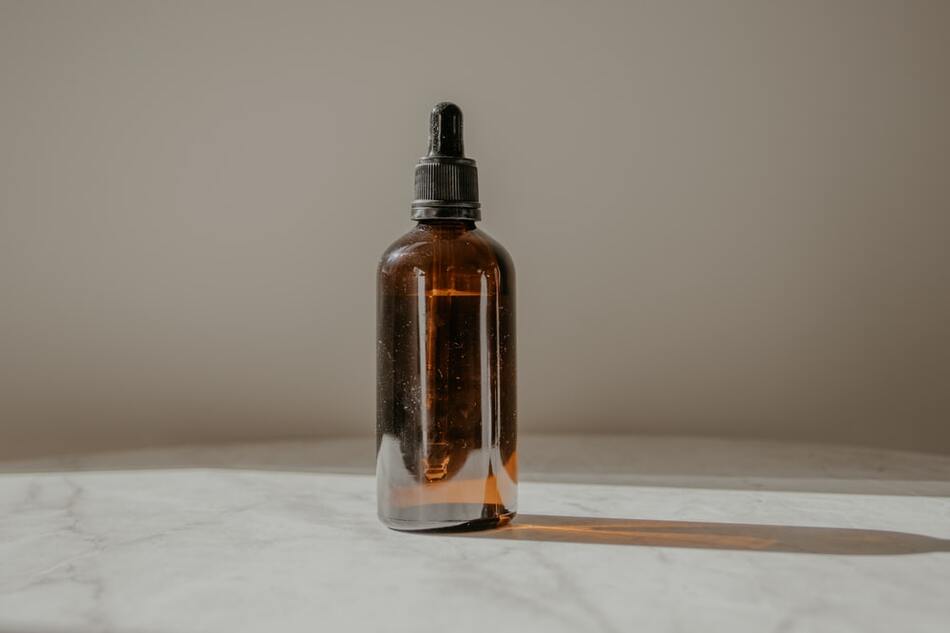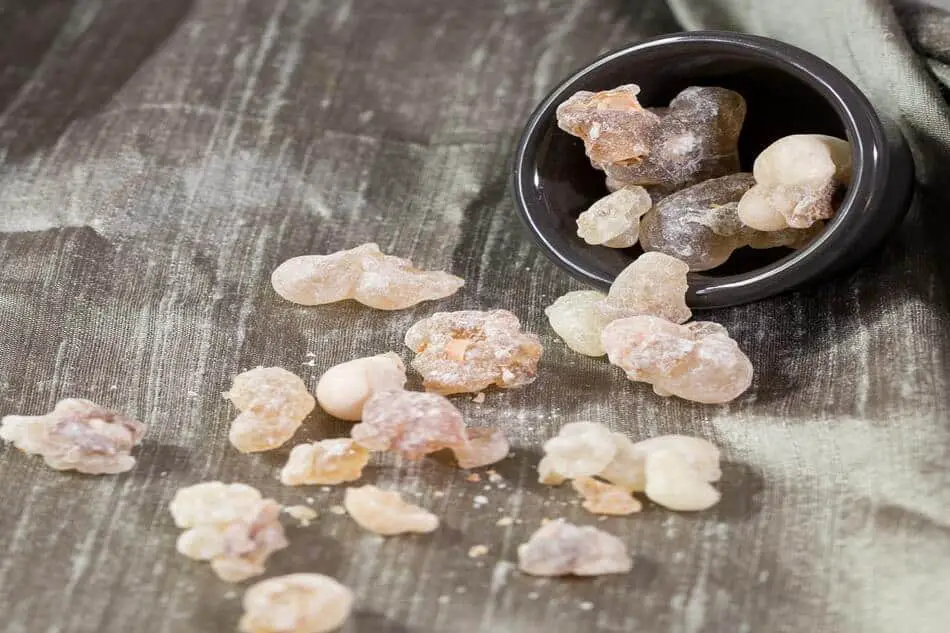Frankincense, or Olibanum, has one of the most unique aromas in the world. It has been utilized for aromatherapy and some religious ceremonies for centuries in the Arabian lands. Frankincense is a kind of resin or tree sap that comes from trees once they’ve reached maturity (typically after ten years of growth). Wondering, what does frankincense oil smell like. I will enlighten you about the heavenly smell of frankincense in this article. Moreover, I will cover some other essential aspects of frankincense.
Frankincense is a woody aromatic that has citrusy, resinous undertones, and spicy notes. It has pine and rosemary overtones with a somewhat smoky scent. When it turns into an oil, it smells similar to incense when burned.
You’ve undoubtedly smelled frankincense in cathedrals and churches before. It is quite popular among Christians, but Muslims and Jews also use it. Frankincense has a relaxing odor that has links with prayer. However, it may also be used to make fragrances by combining it (as an essential oil) with other components to create a special smell.
What Does Frankincense Oil Smell Like?
Frankincense has a pleasant resinous scent. Citruses, pepper, rosemary, and pine needles are all scents that it possesses. It becomes sweeter and more luminous when extracted into frankincense (Olibanum) essential oil.
One of the most instantly recognizable odors is that of frankincense. It has a spicy oriental scent and is quite bright and religious-smelling due to its orient profile.
Frankincense also has a somewhat pungent flavor, which is like the notes of bergamot and black pepper. The scents of frankincense are intricate and vary depending on the environment in which Boswelia trees are grown.

Now, I will round off several undertone scents of frankincense oil.
The Peppery Scent Of Frankincense
Frankincense’s peppery scent is responsible for the astringent odor. The pepper in this fragrance might be faint. It doesn’t smell like pure pepper, but rather something that smells peppery.
The Resinous Aroma Of Frankincense
The gum-like resin that comes from Boswellia trees (as well as other frankincense trees) when their bark is pierced (a process known as tapping) is called frankincense. It’s a thick liquid at first, but it dries to a solid state known as frankincense.
Frankincense is either sifted or left unsorted, depending on the manufacturer’s instructions. The end product consists of little frankincense particles that are of various colors. These can be light yellow, tan, yellow, medium brown, or brown. Frankincense pieces that are darker have a stronger fragrance.
The Rosemary Type Scent Of Frankincense
Rosemary has a pine, citrus, and pepper-like scent. Frankincense’s sharp-rosemary scent has all of these odor undertones. Rosemary is a green fragrance that complements frankincense nicely in the spring and fall, especially when combined with perfume recipes
The Citrusy Scent Of Frankincense
The uplifting quality of frankincense is due to its citrusy scent. Its lemon scent has a cooling impact, which means it smells fantastic in hot weather.
This is also why many people in the Middle East use frankincense to make their clothing smell better and provide a cooling sensation when they go out on hot summer days.
The Pine Smell Undertones Of Frankincense
Within the frankincense scent, you can detect a fecund odor of pine needles. The Boswellia tree has no large leaves. Its tiny leaves appear to be identical to pine needles. This pine-like minty note is part of the frankincense fragrance, adding complexity to it.
Frankincense with a green undertone has a balsamic or aromatic flavor.
The Smoky Scent Of Frankincense
Smoky incense is one of the most characteristic scents that aligns with frankincense. The scent of pure frankincense isn’t particularly woody. However, burnt frankincense smells are typically produced by chemicals for perfumes, candles, and aromatherapy.
The Dry Undertones Of Frankincense
The frankincense scent is dusty and dry. This fragrance has a smoky feel to it, but even when raw, the solidified frankincense chips are somewhat smoky and somewhat dry.
Why The Smell Of Frankincense Is So Important?
Frankincense was originally used to make simple odors in ancient times. It has been combined with carrier oils including almond and flower extracts like lavender to create the first fragrances.
Frankincense is still in use today to flavor various fragrances, and its clean smoky aroma is recognized in churches.
Frankincense is extensively utilized in the beauty sector. It has also been linked to a variety of medical advantages. Some fume frankincense for praying, while others use it to unwind.
If you don’t like to spend a lot of money on an incense fragrance, try burning a tiny piece of frankincense on coal instead.
What Are The Benefits Of Frankincense Oil?
The uses of frankincense include treating anxiety, increasing the immune system, and making you smell good. It has a variety of applications linked to both prayer and perfume creation.

Brings A Soothing And Cooling Effect
When worn or burned as an essential oil for perfumes, frankincense (with its citrus-rosemary-pepper undertones) has a cooling effect. It helps to cool down our bodies’ temperature in the summer. When smelled outdoors in high heat, it gives the sensation of chilly air. This is why it’s not a cloying odor but rather a cooling one, as it’s been utilized for about six millennia in the Middle East’s arid regions.
Boosts Immunity
It has anti-infective qualities. It may aid in the prevention of infections and the efficient destruction of germs. In alternative medicine, it is frequently investigated in this area.
Helps To Deal With Stress
In addition, it is a scent that decreases tension and anxiety, as well as assists with the decline of negative thoughts in general.
Citruses and fragrant things that smell citrusy are scientifically beneficial in the treatment of depression. Frankincense is a complex aroma with a relaxing effect on the mind, similar to that of sandalwood.
Final Thoughts
The scent of frankincense is a blend of citruses, greens, spices, and resins. It has many facets, one of which is that it might be extra citrusy or smoky depending on the time of harvesting.
It takes a long time for the Boswelia tree to produce frankincense, which is why it has such a rich fragrance. This Middle Eastern scent’s lengthy durations have an impact on its final scent.
More Interesting Articles!
Making Frankincense Oil at Home!
How to Make Eucalyptus Essential Oil?
Learn how to Make Clove Essential Oil?
How to Make Lemongrass Essential Oil?
Learn to Make Orange Essential Oil?

